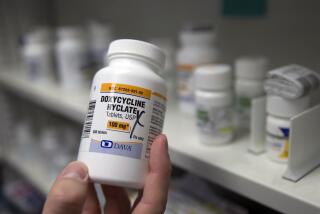Gonorrhea Rates Climbing, Study Finds
- Share via
ATLANTA — Gonorrhea climbed 9% in the United States in 1998 after 12 straight years of decline, the government reported Thursday.
Debra Mosure, an epidemiologist with the Centers for Disease Control and Prevention, speculated that the safe-sex practices that were adopted because of AIDS are being abandoned because of the introduction of more effective drugs against the virus.
“There does seem to be some real increases in the overall number of gonorrhea cases due to unsafe sexual behavior,” she said.
Some states said improved testing was partly responsible for the increase in reported cases.
A 50-state CDC survey found a 9% increase in the rate of gonorrhea--from 121.8 cases per 100,000 people in 1997 to 132.9 per 100,000 in 1998.
The rate had fallen 64.2% from 1985 to 1997.
Many states saw increases in gonorrhea among gay and bisexual men.
The sexually transmitted disease can cause pelvic inflammation and infertility in women, and can also foster the transmission of the AIDS virus.
The Midwest had the highest increase of any region--16.4%. The Northeast was the only region to show a decrease, 0.8%. The South showed an increase of 8.7% and the West an increase of 6.5%.
The highest gonorrhea rate was in Mississippi, with 391.5 cases per 100,000 people. The lowest was in Maine, with 5.4 cases per 100,000.
The CDC said preliminary data from 1999 may show gonorrhea rates declining again.
More to Read
Sign up for Essential California
The most important California stories and recommendations in your inbox every morning.
You may occasionally receive promotional content from the Los Angeles Times.













